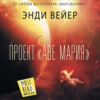Kitobni o'qish: «The Danish History, Books I-IX»
SELECTED BIBLIOGRAPHY:
ORIGINAL TEXT—
Olrik, J and Raeder (Ed.): "Saxo Grammaticus: Gesta Danorum" (Copenhagen, 1931).
Dansk Nationallitteraert Arkiv: "Saxo Grammaticus: Gesta Danorum" (DNA, Copenhagen, 1996). Web-based Latin edition of Saxo, substantiallly based on the above edition; currently at the
OTHER TRANSLATIONS—
Fisher, Peter (Trans.) and Hilda Ellis Davidson (Ed.): "Saxo Grammaticus: History of the Danes" (Brewer, Cambridge, 1979).
RECOMMENDED READING—
Jones, Gwyn: "History of the Vikings" (Oxford University Press, Oxford, 1968, 1973, 1984).
Sturlson, Snorri: "The Heimskringla" (Translation: Samual Laing, London, 1844; released as Online Medieval and Classical Library E-text #15, 1996). Web version at the following URL: http://sunsite.berkeley.edu/OMACL/Heimskringla/
INTRODUCTION
SAXO'S POSITION
Saxo Grammaticus, or "The Lettered", one of the notable historians of the Middle Ages, may fairly be called not only the earliest chronicler of Denmark, but her earliest writer. In the latter half of the twelfth century, when Iceland was in the flush of literary production, Denmark lingered behind. No literature in her vernacular, save a few Runic inscriptions, has survived. Monkish annals, devotional works, and lives were written in Latin; but the chronicle of Roskild, the necrology of Lund, the register of gifts to the cloister of Sora, are not literature. Neither are the half-mythological genealogies of kings; and besides, the mass of these, though doubtless based on older verses that are lost, are not proved to be, as they stand, prior to Saxo. One man only, Saxo's elder contemporary, Sueno Aggonis, or Sweyn (Svend) Aageson, who wrote about 1185, shares or anticipates the credit of attempting a connected record. His brief draft of annals is written in rough mediocre Latin. It names but a few of the kings recorded by Saxo, and tells little that Saxo does not. Yet there is a certain link between the two writers. Sweyn speaks of Saxo with respect; he not obscurely leaves him the task of filling up his omissions. Both writers, servants of the brilliant Bishop Absalon, and probably set by him upon their task, proceed, like Geoffrey of Monmouth, by gathering and editing mythical matter. This they more or less embroider, and arrive in due course insensibly at actual history. Both, again, thread their stories upon a genealogy of kings in part legendary. Both write at the spur of patriotism, both to let Denmark linger in the race for light and learning, and desirous to save her glories, as other nations have saved theirs, by a record. But while Sweyn only made a skeleton chronicle, Saxo leaves a memorial in which historian and philologist find their account. His seven later books are the chief Danish authority for the times which they relate; his first nine, here translated, are a treasure of myth and folk-lore. Of the songs and stories which Denmark possessed from the common Scandinavian stock, often her only native record is in Saxo's Latin. Thus, as a chronicler both of truth and fiction, he had in his own land no predecessor, nor had he any literary tradition behind him. Single-handed, therefore, he may be said to have lifted the dead-weight against him, and given Denmark a writer. The nature of his work will be discussed presently.
LIFE OF SAXO
Of Saxo little is known but what he himself indicates, though much doubtful supposition has gathered round his name.
That he was born a Dane his whole language implies; it is full of a glow of aggressive patriotism. He also often praises the Zealanders at the expense of other Danes, and Zealand as the centre of Denmark; but that is the whole contemporary evidence for the statement that he was a Zealander. This statement is freely taken for granted three centuries afterwards by Urne in the first edition of the book (1514), but is not traced further back than an epitomator, who wrote more than 200 years after Saxo's death. Saxo tells us that his father and grandfather fought for Waldemar the First of Denmark, who reigned from 1157 to 1182. Of these men we know nothing further, unless the Saxo whom he names as one of Waldemar's admirals be his grandfather, in which case his family was one of some distinction and his father and grandfather probably "King's men". But Saxo was a very common name, and we shall see the licence of hypothesis to which this fact has given rise. The notice, however, helps us approximately towards Saxo's birth-year. His grandfather, if he fought for Waldemar, who began to reign in 1157, can hardly have been born before 1100, nor can Saxo himself have been born before 1145 or 1150. But he was undoubtedly born before 1158, since he speaks of the death of Bishop Asker, which took place in that year, as occurring "in our time". His life therefore covers and overlaps the last half of the twelfth century.
His calling and station in life are debated. Except by the anonymous Zealand chronicler, who calls him Saxo "the Long", thus giving us the one personal detail we have, he has been universally known as Saxo "Grammaticus" ever since the epitomator of 1431 headed his compilation with the words, "A certain notable man of letters ("grammaticus"), a Zealander by birth, named Saxo, wrote," etc. It is almost certain that this general term, given only to men of signal gifts and learning, became thus for the first time, and for good, attached to Saxo's name. Such a title, in the Middle Ages, usually implied that its owner was a churchman, and Saxo's whole tone is devout, though not conspicuously professional.
But a number of Saxos present themselves in the same surroundings with whom he has been from time to time identified. All he tells us himself is, that Absalon, Archbishop of Lund from 1179 to 1201, pressed him, who was "the least of his companions, since all the rest refused the task", to write the history of Denmark, so that it might record its glories like other nations. Absalon was previously, and also after his promotion, Bishop of Roskild, and this is the first circumstance giving colour to the theory—which lacks real evidence—that Saxo the historian was the same as a certain Saxo, Provost of the Chapter of Roskild, whose death is chronicled in a contemporary hand without any mark of distinction. It is unlikely that so eminent a man would be thus barely named; and the appended eulogy and verses identifying the Provost and the historian are of later date. Moreover, the Provost Saxo went on a mission to Paris in 1165, and was thus much too old for the theory. Nevertheless, the good Bishop of Roskild, Lave Urne, took this identity for granted in the first edition, and fostered the assumption. Saxo was a cleric; and could such a man be of less than canonical rank? He was (it was assumed) a Zealander; he was known to be a friend of Absalon, Bishop of Roskild. What more natural than that he should have been the Provost Saxo? Accordingly this latter worthy had an inscription in gold letters, written by Lave Urne himself, affixed to the wall opposite his tomb.
Even less evidence exists for identifying our Saxo with the scribe of that name—a comparative menial—who is named in the will of Bishop Absalon; and hardly more warranted is the theory that he was a member, perhaps a subdeacon, of the monastery of St. Laurence, whose secular canons formed part of the Chapter of Lund. It is true that Sweyn Aageson, Saxo's senior by about twenty years, speaks (writing about 1185) of Saxo as his "contubernalis". Sweyn Aageson is known to have had strong family connections with the monastery of St. Laurence; but there is only a tolerably strong probability that he, and therefore that Saxo, was actually a member of it. ("Contubernalis" may only imply comradeship in military service.) Equally doubtful is the consequence that since Saxo calls himself "one of the least" of Absalon's "followers" ("comitum"), he was probably, if not the inferior officer, who is called an "acolitus", at most a sub-deacon, who also did the work of a superior "acolitus". This is too poor a place for the chief writer of Denmark, high in Absalon's favor, nor is there any direct testimony that Saxo held it.
His education is unknown, but must have been careful. Of his training and culture we only know what his book betrays. Possibly, like other learned Danes, then and afterwards, he acquired his training and knowledge at some foreign University. Perhaps, like his contemporary Anders Suneson, he went to Paris; but we cannot tell. It is not even certain that he had a degree; for there is really little to identify him with the "M(agister) Saxo" who witnessed the deed of Absalon founding the monastery at Sora.
THE HISTORY
How he was induced to write his book has been mentioned. The expressions of modesty Saxo uses, saying that he was "the least" of Absalon's "followers", and that "all the rest refused the task", are not to be taken to the letter. A man of his parts would hardly be either the least in rank, or the last to be solicited. The words, however, enable us to guess an upward limit for the date of the inception of the work. Absalon became Archbishop in 1179, and the language of the Preface (written, as we shall see, last) implies that he was already Archbishop when he suggested the History to Saxo. But about 1185 we find Sweyn Aageson complimenting Saxo, and saying that Saxo "had `determined' to set forth all the deeds" of Sweyn Estridson, in his eleventh book, "at greater length in a more elegant style". The exact bearing of this notice on the date of Saxo's History is doubtful. It certainly need not imply that Saxo had already written ten books, or indeed that he had written any, of his History. All we call say is, that by 1185 a portion of the history was planned. The order in which its several parts were composed, and the date of its completion, are not certainly known, as Absalon died in 1201. But the work was not then finished; for, at the end of Bk. XI, one Birger, who died in 1202, is mentioned as still alive.
We have, however, a yet later notice. In the Preface, which, as its whole language implies, was written last, Saxo speaks of Waldemar II having "encompassed (`complexus') the ebbing and flowing waves of Elbe." This language, though a little vague, can hardly refer to anything but an expedition of Waldemar to Bremen in 1208. The whole History was in that case probably finished by about 1208. As to the order in which its parts were composed, it is likely that Absalon's original instruction was to write a history of Absalon's own doings. The fourteenth and succeeding books deal with these at disproportionate length, and Absalon, at the expense even of Waldemar, is the protagonist. Now Saxo states in his Preface that he "has taken care to follow the statements ("asserta") of Absalon, and with obedient mind and pen to include both his own doings and other men's doings of which he learnt."
The latter books are, therefore, to a great extent, Absalon's personally communicated memoirs. But we have seen that Absalon died in 1201, and that Bk. xi, at any rate, was not written after 1202. It almost certainly follows that the latter books were written in Absalon's life; but the Preface, written after them, refers to events in 1208. Therefore, unless we suppose that the issue was for some reason delayed, or that Saxo spent seven years in polishing—which is not impossible—there is some reason to surmise that he began with that portion of his work which was nearest to his own time, and added the previous (especially the first nine, or mythical) books, as a completion, and possibly as an afterthought. But this is a point which there is no real means of settling. We do not know how late the Preface was written, except that it must have been some time between 1208 and 1223, when Anders Suneson ceased to be Archbishop; nor do we know when Saxo died.
HISTORY OF THE WORK
Nothing is stranger than that a work of such force and genius, unique in Danish letters, should have been forgotten for three hundred years, and have survived only in an epitome and in exceedingly few manuscripts. The history of the book is worth recording. Doubtless its very merits, its "marvellous vocabulary, thickly-studded maxims, and excellent variety of images," which Erasmus admired long afterwards, sealed it to the vulgar. A man needed some Latin to appreciate it, and Erasmus' natural wonder "how a Dane at that day could have such a force of eloquence" is a measure of the rarity both of the gift and of a public that could appraise it. The epitome (made about 1430) shows that Saxo was felt to be difficult, its author saying: "Since Saxo's work is in many places diffuse, and many things are said more for ornament than for historical truth, and moreover his style is too obscure on account of the number of terms ("plurima vocabula") and sundry poems, which are unfamiliar to modern times, this opuscle puts in clear words the more notable of the deeds there related, with the addition of some that happened after Saxo's death." A Low-German version of this epitome, which appeared in 1485, had a considerable vogue, and the two together "helped to drive the history out of our libraries, and explains why the annalists and geographers of the Middle Ages so seldom quoted it." This neglect appears to have been greatest of all in Denmark, and to have lasted until the appearance of the "First Edition" in 1511.
The first impulse towards this work by which Saxo was saved, is found in a letter from the Bishop of Roskild, Lave Urne, dated May 1512, to Christian Pederson, Canon of Lund, whom he compliments as a lover of letters, antiquary, and patriot, and urges to edit and publish "tam divinum latinae eruditionis culmen et splendorem Saxonem nostrum". Nearly two years afterwards Christian Pederson sent Lave Urne a copy of the first edition, now all printed, with an account of its history. "I do not think that any mortal was more inclined and ready for" the task. "When living at Paris, and paying heed to good literature, I twice sent a messenger at my own charges to buy a faithful copy at any cost, and bring it back to me. Effecting nothing thus, I went back to my country for this purpose; I visited and turned over all the libraries, but still could not pull out a Saxo, even covered with beetles, bookworms, mould, and dust. So stubbornly had all the owners locked it away." A worthy prior, in compassion offered to get a copy and transcribe it with his own hand, but Christian, in respect for the prior's rank, absurdly declined. At last Birger, the Archbishop of Lund, by some strategy, got a copy, which King Christian the Second allowed to be taken to Paris on condition of its being wrought at "by an instructed and skilled graver (printer)." Such a person was found in Jodocus Badius Ascenshls, who adds a third letter written by himself to Bishop Urne, vindicating his application to Saxo of the title Grammaticus, which he well defines as "one who knows how to speak or write with diligence, acuteness, or knowledge." The beautiful book he produced was worthy of the zeal, and unsparing, unweariable pains, which had been spent on it by the band of enthusiasts, and it was truly a little triumph of humanism. Further editions were reprinted during the sixteenth century at Basic and at Frankfort-on-Main, but they did not improve in any way upon the first; and the next epoch in the study of Saxo was made by the edition and notes of Stephanus Johansen Stephanius, published at Copenhagen in the middle of the seventeenth century (1644). Stephanius, the first commentator on Saxo, still remains the best upon his language. Immense knowledge of Latin, both good and bad (especially of the authors Saxo imitated), infinite and prolix industry, a sharp eye for the text, and continence in emendation, are not his only virtues. His very bulkiness and leisureliness are charming; he writes like a man who had eternity to write in, and who knew enough to fill it, and who expected readers of an equal leisure. He also prints some valuable notes signed with the famous name of Bishop Bryniolf of Skalholt, a man of force and talent, and others by Casper Barth, "corculum Musarum", as Stephanius calls him, whose textual and other comments are sometimes of use, and who worked with a MS. of Saxo. The edition of Klotz, 1771, based on that of Stephanius, I have but seen; however, the first standard commentary is that begun by P. E. Muller, Bishop of Zealand, and finished after his death by Johan Velschow, Professor of History at Copenhagen, where the first part of the work, containing text and notes, was published in 1839; the second, with prolegomena and fuller notes, appearing in 1858. The standard edition, containing bibliography, critical apparatus based on all the editions and MS. fragments, text, and index, is the admirable one of that indefatigable veteran, Alfred Holder, Strasburg, 1886.
Hitherto the translations of Saxo have been into Danish. The first that survives, by Anders Soffrinson Vedel, dates from 1575, some sixty years after the first edition. In such passages as I have examined it is vigorous, but very free, and more like a paraphrase than a translation, Saxo's verses being put into loose prose. Yet it has had a long life, having been modified by Vedel's grandson, John Laverentzen, in 1715, and reissued in 1851. The present version has been much helped by the translation of Seier Schousbolle, published at Copenhagen in 1752. It is true that the verses, often the hardest part, are put into periphrastic verse (by Laurentius Thura, c. 1721), and Schousbolle often does not face a difficulty; but he gives the sense of Saxo simply and concisely. The lusty paraphrase by the enthusiastic Nik. Fred. Sev. Grundtvig, of which there have been several editions, has also been of occasional use. No other translations, save of a scrap here and there into German, seem to be extant.
THE MSS
It will be understood, from what has been said, that no complete MS. of Saxo's History is known. The epitomator in the fourteenth century, and Krantz in the seventeenth, had MSS. before them; and there was that one which Christian Pedersen found and made the basis of the first edition, but which has disappeared. Barth had two manuscripts, which are said to have been burnt in 1636. Another, possessed by a Swedish parish priest, Aschaneus, in 1630, which Stephenhis unluckily did not know of, disappeared in the Royal Archives of Stockholm after his death. These are practically the only MSS. of which we have sure information, excepting the four fragments that are now preserved. Of these by far the most interesting is the "Angers Fragment."
This was first noticed in 1863, in the Angers Library, where it was found degraded into the binding of a number of devotional works and a treatise on metric, dated 1459, and once the property of a priest at Alencon. In 1877 M. Gaston Paris called the attention of the learned to it, and the result was that the Danish Government received it next year in exchange for a valuable French manuscript which was in the Royal Library at Copenhagen. This little national treasure, the only piece of contemporary writing of the History, has been carefully photographed and edited by that enthusiastic and urbane scholar, Christian Bruun. In the opinion both of Dr. Vigfusson and M. Paris, the writing dates from about 1200; and this date, though difficult to determine, owing to the paucity of Danish MSS. of the 12th and early lath centuries, is confirmed by the character of the contents. For there is little doubt that the Fragment shows us Saxo in the labour of composition. The MSS. looks as if expressly written for interlineation. Besides a marginal gloss by a later, fourteenth century hand, there are two distinct sets of variants, in different writings, interlined and running over into the margin. These variants are much more numerous in the prose than in the verse. The first set are in the same hand as the text, the second in another hand: but both of them have the character, not of variants from some other MSS., but of alternative expressions put down tentatively. If either hand is Saxo's it is probably the second. He may conceivably have dictated both at different times to different scribes. No other man would tinker the style in this fashion. A complete translation of all these changes has been deemed unnecessary in these volumes; there is a full collation in Holder's "Apparatus Criticus". The verdict of the Angers-Fragment, which, for the very reason mentioned, must not be taken as the final form of the text, nor therefore, despite its antiquity, as conclusive against the First Edition where the two differ, is to confirm, so far as it goes, the editing of Ascensius and Pederson. There are no vital differences, and the care of the first editors, as well as the authority of their source, is thus far amply vindicated.
A sufficient account of the other fragments will be found in Holder's list. In 1855 M. Kall-Rasmussen found in the private archives at Kronborg a scrap of fourteenth century MS., containing a short passage from Bk. vii. Five years later G. F. Lassen found, at Copenhagen, a fragment of Bk. vi believed to be written in North Zealand, and in the opinion of Bruun belonging to the same codex as Kall-Rasmussen's fragment. Of another longish piece, found in Copenhagen at the end of the seventeenth century by Johannes Laverentzen, and belonging to a codex burnt in the fire of 1728, a copy still extant in the Copenhagen Museum, was made by Otto Sperling. For fragments, either extant or alluded to, of the later books, the student should consult the carefully collated text of Holder. The whole MS. material, therefore, covers but a little of Saxo's work, which was practically saved for Europe by the perseverance and fervour for culture of a single man, Bishop Urne.










